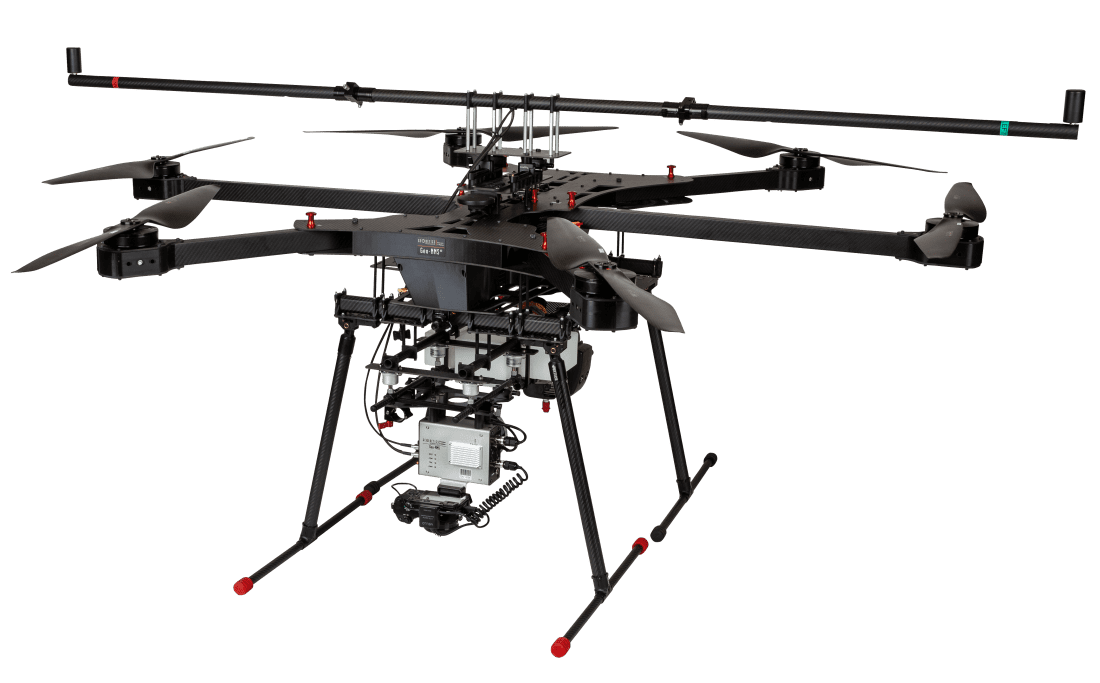
The xFold Dragon x6 Hybrid drone primarily being used for testing. (xFold)
The FAA is undertaking a research initiative with partners including Harris Corporation, the University of North Dakota and the Northern Plains UAS Test Site to explore the implementation and operation of unmanned traffic management (UTM) systems in the National Airspace System.
The Northern Plains site in Grand Forks, North Dakota, is the same one that has hosted testing of large commercial drone beyond-visual-line-of-sight (BVLOS) operations by companies such as General Atomics, with help from Grand Forks Air Force Base. The site is also a participant in the Department of Transportation’s UAS Integration Pilot Program and helping NASA and Collins Aerospace (formerly Rockwell Collins) test UTM technology. The FAA’s testing, according to Northern Plains Director of Research and Development Chris Thielen, is initially focused on Part 107 UAS operating under 400 feet, though he acknowledged the need to later expand to higher altitudes and larger UAS.
The FAA has been very focused on UTM over the last year, trying to both contend with the risks of small UAS mucking up normal flight operations, potentially grounding flights and introducing unexpected complications, as well as finding a way to integrate the coming wave of commercial unmanned package-delivery, urban air mobility and and other largely low-flying unmanned traffic into an already busy airspace.
In this latest effort, Northern Plains “will conduct flight tests to validate the components” of the FAA’s UTM system, primarily using xFold Dragon x6 Hybrid drones, according to Thielen. Testing is currently underway and is scheduled to continue through March or April, targeting different components of the architecture. A focus of the testing is understanding the flow of information from user to the UTM system and FAA, and Northern Plains said that both visual and BVLOS operations will be evaluated.
Once the first phase of testing is complete, the next step of the project calls for “use case” flights to ensure that the system holds up to commercial UAS operations. In that phase of the project, the team will support obtaining Part 107 waivers using the system, allowing interested commercial partners to use the system for their UAS operations.
“Data gathered from this type of testing is the critical information needed to ensure safe management of UAS in the national airspace to help move commercialization of the industry forward,” Northern Plains Executive Director Nick Flom said in a statement.
Partners in the testing outside of the FAA and Northern Plains include the University of North Dakota, Harris, Collins Aerospace, Simulyze, AiRXOS, Echodyne and uAvionix. The university and Harris jointly lead the project, with UND heading up risk management efforts and Harris acting as the technology provider and installer. Northern Plains is executing the operations with support from the FAA.